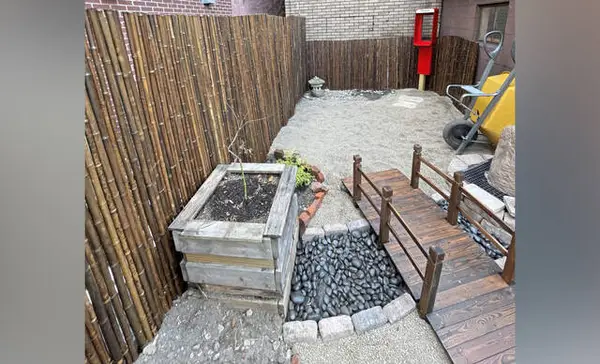It all started with a book.
Alisa Whysong and her husband, Todd, lost their daughter Katie to depression in 2021. Grieving had taken them on a few different journeys, including the creation of a Telephone of the Wind garden located at the Maple Leaf, an art gallery space in Millvale.
One of Whysong’s friends recommended the book “The Phone Box at the Edge of the World” to her. It’s based on a concept invented by Itaru Sasaki. Sasaki lost his cousin in 2010 to terminal cancer. In an effort to continue to feel connected to his cousin and to reflect on the feeling of loss, Sasaki set up an old telephone booth in his garden to talk with him on the phone. By 2011, Sasaki had opened the booth up to the public after the Tōhoku tsunami resulted in the deaths of more than 15,000 people, including more than 1,200 people in Ōtsuchi. People from all over the world have since traveled to the booth to speak to lost loved ones.
“The idea is that you can go there and say the goodbyes that you didn’t get to say,” Whysong said.
Whysong was inspired to bring a Telephone of the Wind to Millvale after discovering an organization dedicated to Telephones of the Wind all over the country. She realized that there was no phone that was registered in Pennsylvania, and decided to recruit help through community nonprofits like Artspiration and her family’s own, The Positive Painting Project.
Whysong said that while the telephones are normally found in nature, the group ran into some obstacles when they attempted to have it added to Girty’s Run Woods. Brian Wolovich, owner of Maple Leaf, quickly offered up his courtyard space.
“We went to check it out and it was just this mess of stuff,” Whysong said.
The group has spent the last five months fixing up the space. Active community member Lisa Seel was inspired to turn the space into a Japanese garden after reading the same book as Whysong and visiting the Rabkin Japanese Gardens in Tarentum. She presented her design ideas to the team and they were sold.
“It’s a very private setting for people to sit with their emotions,” Seel said. “It’s a gated area, and there is a bench for meditation and, of course, a telephone. The space will include the qualities of a traditional Japanese garden with running water and plants. It’s a place to remember and grieve and to say those things that you didn’t get a chance to say. There are always things left unsaid.”
Whysong said that the garden has a private entrance from an alley that runs next to the gallery. There is also a parking lot for people driving to have convenient access to the garden.
“Everything that we have done has been in honor of our daughter,” Whysong said. “The Positive Painting Project and the telephone have really helped us heal. Just the process of seeing it come together, and bringing all of these amazing artists and creative minds together to do something like this.”
Seel said that the project’s team has been collecting funds for the garden’s completion and upkeep through a funding platform called Give Butter. After the garden is complete, the team is planning to register the garden with the Telephone of the Wind organization. They are planning to open the garden to the public on Nov. 5. The day before, they will be hosting a ceremony to formally dedicate the garden and telephone to Katie Whysong.
Haley Daugherty is a Tribune-Review staff writer. You can contact Haley at 724-850-1203 or hdaugherty@triblive.com.

